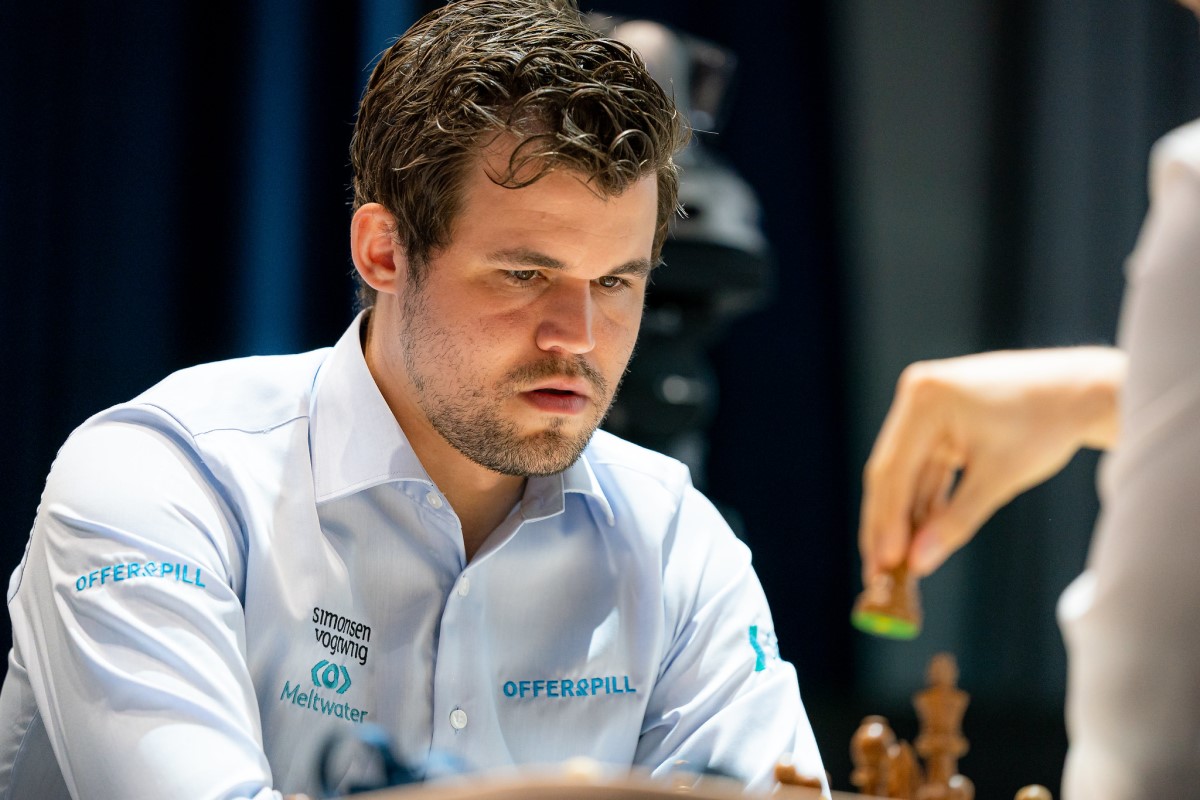


[Note that Jon Speelman also looks at the content of the article in video format, here embedded at the end of the article.]
In the previous two columns, my “mirror” examined games by Bobby Fischer, Anatoly Karpov and Garry Kasparov in the hunt for the “best of them all”. Today we fast-forward to the present champion, Magnus Carlsen.
 It’s always difficult to evaluate a champion at the time, and possible that we tend to overestimate them until they are supplanted, but Calrsen is surely one of the top five players in history. In the list that Yasser Seirawan sent in comments to the previous columns he put him fourth behind Kasparov, Karpov and Fischer. And when I (inadvertently but serendipitously) sparked off this line of enquiry by suggesting that he is arguably the strongest ever, I don’t think it was totally unreasonable.
It’s always difficult to evaluate a champion at the time, and possible that we tend to overestimate them until they are supplanted, but Calrsen is surely one of the top five players in history. In the list that Yasser Seirawan sent in comments to the previous columns he put him fourth behind Kasparov, Karpov and Fischer. And when I (inadvertently but serendipitously) sparked off this line of enquiry by suggesting that he is arguably the strongest ever, I don’t think it was totally unreasonable.
One thing you can say is that while Magnus has won and then kept the world title for eight years now, he hasn’t been utterly convincing, at least at classical chess. In an uninterrupted run of over ten years as the world’s top-rated player, he became champion by defeating Viswanathan Anand in 2013 [celebration pictured], and has since then defended his title against Anand himself, Sergey Karjakin and Fabiano Caruana. The latter two were drawn at classical chess, but Carlsen always had the rapidplay in reserve and batted off both opponents relatively easily.
People make the point that whatever you think about his reign, Bobby Fischer held much more dominance over his rivals than today’s champions — this moreover at a time when he didn’t have the technological aids that modern players do.
Indeed, Carlsen has the use of fantastic computer engines on cutting-edge hardware. But his rivals have tremendous facilities too and this makes it much harder, for example, to establish an advantage in the opening unless you can catch the opponent out.
In addition (depending on your definition — would rated at some stage more than 2725 do?), there are more top class players than ever before, partly because with the explosion of information available over, the internet players develop so much faster. I didn’t become a grandmaster till I was 24. In the modern era, anybody who hasn’t gained the title by his or her late teens is already liable to be considered a late developer.
Carlsen is a universal player who shines in different types of position and at very different time limits. The dominant force in the middle of the last century, Mikhail Botvinnik (world champion on and off from 1948-63), famously disapproved of blitz. Carlsen is superb at 3 minute (and indeed the deadly “slow” 5 minute) chess and recently won his first 30(!) games straight in an online 3-minute arena. But he seems to find this all a bit slow and plays more bullet online, standing supreme among the small coterie of people — I suppose there are a few hundred in the world — who play bullet so well that it looks not like a video game, but well ...chess.

Carlsen during round 2 of this year’s FIDE World Cup | Photo: Eric Rosen
Carlsen is a great tactician, and in a fortnight we’ll examine some “blood pudding” (which is really a type of sausage) to follow this week's main course. But his greatest strength of all is in the endgame, at which he is probably the best ever (I await fury from Capablanca fans, but the great Cuban’s opponents were generally a lot weaker).
He especially likes playing with the two bishops, and I’ve got three examples here this time. One of the advantages of bishops is that it’s normally not hard to arrange BxN if necessary, but bishops can hide from NxB. Carlsen is fantastically adept at this, so much so that you sometimes feel that he is creating extra squares on the board for his prelates. And on a traditional wooden board, you might just about stretch this project to encompass the title above.
Select an entry from the list to switch between games